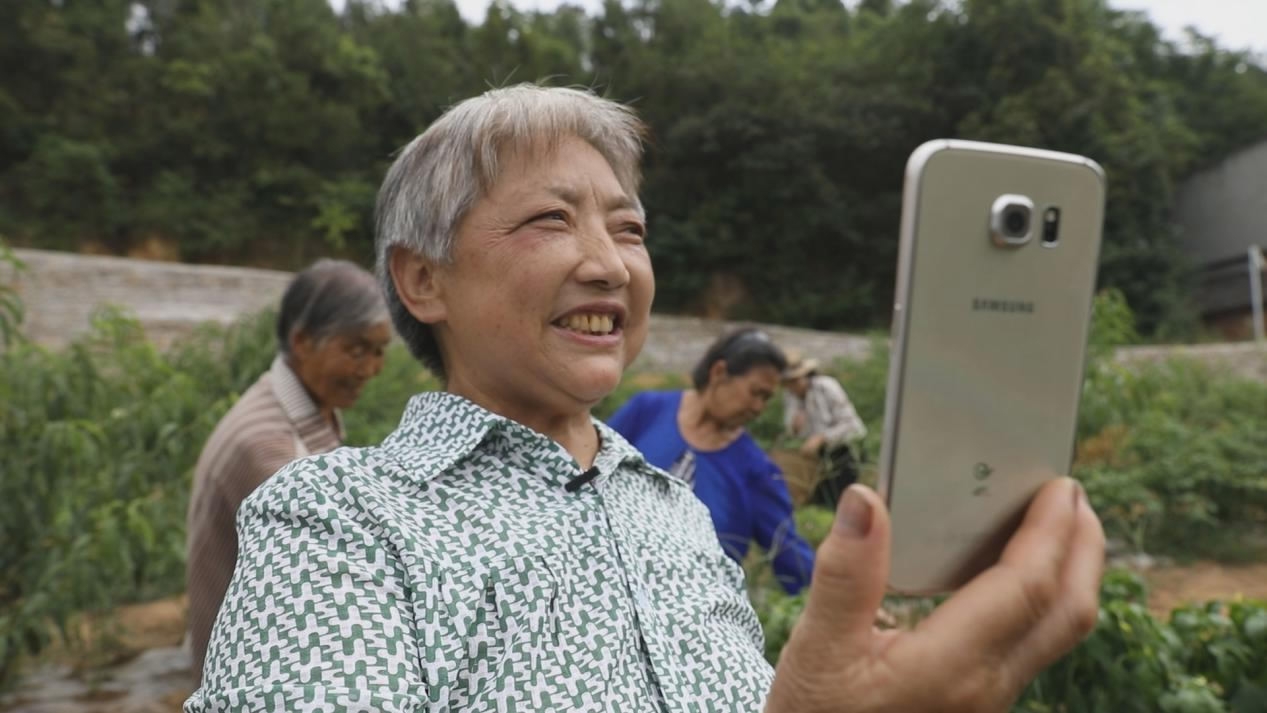
China
21:12, 07-Sep-2017
China Footprint: Infrastructure brings prosperity to China's rural communities
By Liu Yang, Li Yang

As China builds expressways and high speed rails to connect major cities, rural villages are not being forgotten. In the early 90s, the Chinese government launched the Connect Every Village project, which aimed at building roads to every village and bringing television, telecom, and Internet connections to rural areas.
These efforts continue to this day as authorities try to lift impoverished areas into prosperity. In Xinhe Village of Santai County in Sichuan Province, the local government has been making tremendous efforts in lifting local residents out of poverty and improving the local infrastructures day by day.
Ren Xiangqiong, a 62-year-old resident in Xinhe Village, was video-chatting with her son on a mobile phone as CGTN’s reporters arrived at her pepper field for filming. She gave thanks to the extensive 4G cellular network that serves her old farming town. Ren’s son Li Jin lives in a coastal city, some 2,000 kilometers away. Now getting in touch with him has become more affordable and convenient.

Ren Xiangqin is video-chatting with her son on a mobile phone, thanks to the 4G network that started covering her village last year. /CGTN Photo
Ren Xiangqin is video-chatting with her son on a mobile phone, thanks to the 4G network that started covering her village last year. /CGTN Photo
The benefit of infrastructure in the village also extends beyond strengthening personal connections.
Ren and her fellow villagers work both in the early morning and afternoon, picking 35 to 40 kilos of peppers, sometimes as much as 50 kilos. This year, villagers were able to harvest dozens of tons worth of peppers from the area’s fertile soil. This bounty will yield about 20,000 yuan (3,082 dollars) for the farmers who work in the land all year long.

A bumper harvest with dozens of tons of pepper /CGTN Photo
A bumper harvest with dozens of tons of pepper /CGTN Photo
Every minute counts as only the freshest products command the best prices. Gong Chunyuan, a driver for Chengdu Yingyu Food Company, said, “Back then, I couldn’t drive my truck into the village because the road was so narrow. The vehicle couldn’t make turns. These days, it’s much better because the road is wider. We need fresh peppers to make high-quality products.”
In 2016, over 600 villagers contributed a combined 360,000 yuan for the construction of a four-kilometer road. Hundreds of villagers took part in the project – some even working with their bare hands – and their efforts are starting to pay off in the form of better accessibility.

A bird's-eye view of a new road alongside the hill and vast pepper fields. /CGTN Photo
A bird's-eye view of a new road alongside the hill and vast pepper fields. /CGTN Photo
Li Zhixing, chief of village of Santai County, said, “Many years ago, it was all just a dream to think about having a good road and clean tap water in the village. And now we have natural gas in the village, running water, and mobile reception so people can talk to their relatives on the phone.”
According to both the Ministry of Transport and China Internet Network Information Center (CNNIC), at the end of last year, there were close to four million kilometers of rural roads nationwide, meaning nearly all villages in the country had road access. As well as physical roads, extending the nation’s broadband highway to rural areas is also important. Data from June 2017 showed China has over 750 million Internet users, over a quarter of whom are in rural areas, though penetration rates in the countryside are still far lower than in cities.
The Chinese government wants to eradicate poverty by 2020. To reach that goal, 10 million people need to be brought above the poverty line every year and new roads, Internet connections, and other vital infrastructure are crucial for reaching the goal.
Ren’s life turned for the better in 2016. She has been lifted out of poverty and was able to take advantage of the better infrastructure in her village, and in her home, which now has tap water and an Internet connection.

Ren Xiangqiong watches TV at home in Xinhe Village, Santai County, Sichuan Province. /CGTN Photo
Ren Xiangqiong watches TV at home in Xinhe Village, Santai County, Sichuan Province. /CGTN Photo
Many roads have been built, and because of these new roads, transporting all agricultural products out of the village is much easier. Also, the logistics company is now able to drive to her home to buy the corn and peanuts. She no longer needs to carry bags of food to sell in the market.
With better connectivity with the outside world, villagers in Xinhe are having a better grasp of the market and a much more open mindset. For example, to seize new market opportunities, the villagers just started growing peppers this past year.

Locals call this “Xiaomila” in Chinese, a type of pepper grow in Sichuan Province. /CGTN Photo
Locals call this “Xiaomila” in Chinese, a type of pepper grow in Sichuan Province. /CGTN Photo
These prickly peppers are in great demand in Sichuan, where people are known for their indulgence in spicy food. Now, local villagers are looking forward to a good harvest this year and better pay for their hard work.
1417km
China Footprint (CGTN's special series):

SITEMAP
Copyright © 2018 CGTN. Beijing ICP prepared NO.16065310-3
Copyright © 2018 CGTN. Beijing ICP prepared NO.16065310-3